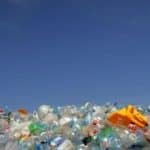Earth Day: What can those most vulnerable to climate change do?
“Taking leadership to counteract the effects of climate change.”, is the main appeal of the Secretary General of the United Nations, Ban Ki-moonin the Earth Day, which is being celebrated today around the world. He also urged people to be aware of the consequences of their decisions on the planet and what it will mean for future generations. “The big decisions ahead of us are not just for lawmakers and world leaders.”, highlighted Ban Ki- moon.
Although climate change will not affect all countries equally and all activities carried out to reduce greenhouse gases (GHG) will benefit the entire planet, there is a group of people who are the hardest hit by global warming. The most vulnerable, who in Latin America are located mainly in the Caribbean, face the greatest social problems, such as inequality, poverty and overexposure to changes in nature.
Tania Guillén, specialist of the Humboldt Center,he said to ConexiónCOP that although in one way or another we are all vulnerable to the impacts of climate change, it is the populations living in poverty and extreme poverty that have the least capacity to adapt to its impacts.
“These populations have been and are affected by extreme hydrometeorological phenomena. Most of them live in marginal areas, with little access to basic services [such as water or electricity] and where land-use planning criteria have not been considered; therefore, they are areas affected by floods or droughts. To this must be added the secondary effects, such as, for example, that during a drought there is an increase in food prices or the need for more water”.”, he explained.
The most vulnerable: children and women
“This Wednesday [today] is Earth Day, a day to appreciate and protect this precious planet we call home. And today there is no greater threat to our planet than climate change.”, said the U.S. president, Barack Obama, last Saturday. In addition, he said he was confident that next December in Paris (COP21) a global commitment will be reached to fight against the increase of GHGs.
As Obama stressed, the world's biggest struggle today is with climate change, and the hardest hit are women and children.
The Food and Agriculture Organization of the United Nations (FAO) estimates that if women had greater access to resources than men, they could increase yields of managed crops by 20% to 30%, which would contribute to an increase in agricultural production in developing countries of between 2.5% and 4%.
It is also known that within the vulnerable population, women and children are the most affected because income comes mainly from men's work. However, this depends on the specific characteristics and conditions of each population. In the case of women and children, when an emergency occurs due to an extreme weather event, their roles tend to change, so they have to put aside some of their usual chores to attend to the situation, which means less care for their children and even having to stop going to school to help out at home. In addition, when there are major or almost total crop losses, men are forced to leave and look for other jobs outside the home and even outside their region or country, which means that the woman must take care of everything in the house during the period when the man is absent.
About it, Deissy Martínez Barón, Scientific Coordinator of CCAFS Latin America, explained that the most vulnerable populations are those whose socioeconomic conditions are weak, which are mainly based on subsistence agriculture and are located in areas with the highest risk of climatic phenomena such as floods, droughts, hurricanes, etc.
“The main impacts of climate change on agriculture in Latin America refer to the increase in the frequency and intensity of climatic phenomena, such as longer periods of drought, more intense precipitation, shorter rainy seasons and higher minimum temperatures in several areas of the continent, leading to the displacement of crops to other altitudes; In this sense, the rural population is more affected by its economic dependence on agriculture; the change in weather patterns, for example, directly affects the evolution of the crop and consequently its yield, which determines a reduction in household income received from the sale of agricultural products”.”, he added.
Although there is currently no consensus on the number of people vulnerable to climate change, some studies speak of 10% to 11% of the total world population being affected by the effects of climate change by 2100.
In addition, the World Bank establishes that for 70% of the world's poor living in rural areas, agriculture is the main source of income and work, which makes it possible to measure the impacts if we consider that the most vulnerable population is the one living in rural areas.
Source: COP connection



